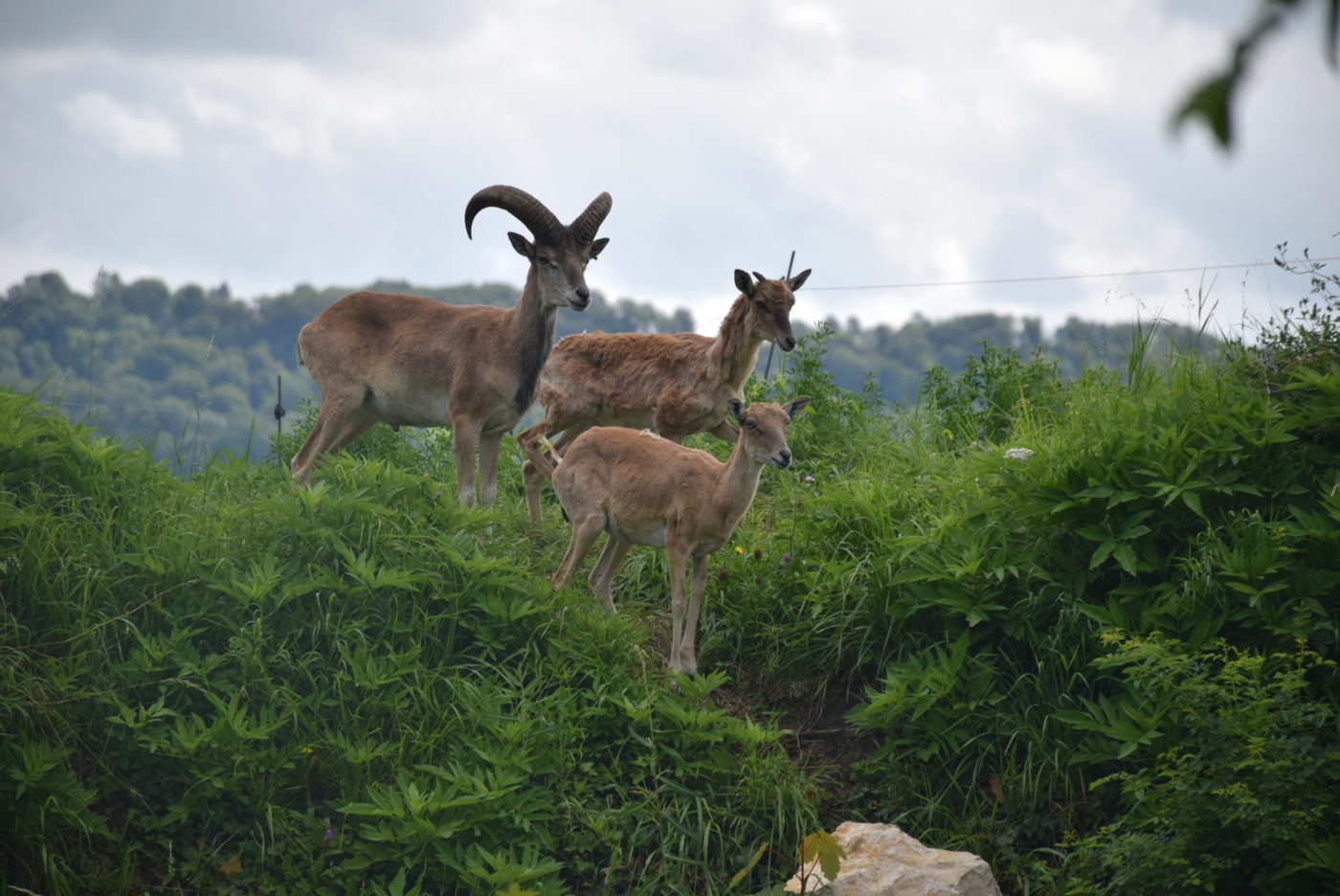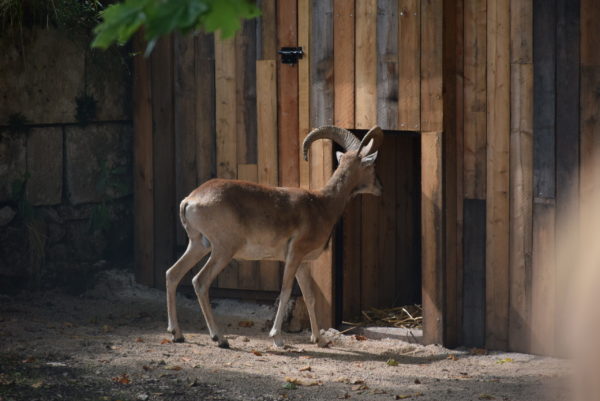As part of our ongoing commitment to the protection of endangered species and animal welfare, the Museum's teams are delighted to announce the opening of a specially designed area for the Bukhara Urial, an endangered mountain species.

CHOICE OF SPECIES: A COMMITMENT TO CONSERVATION
The Bukhara Urial is a wild mouflon found in eastern Iran, Central Asia, Afghanistan, Tajikistan, Uzbekistan and Turkmenistan. It can be recognized by its long, sickle-shaped horns that curve backwards. It is a herbivorous mammal.
The Bukhara Urial was chosen because of its conservation status and the importance of preserving it. This initiative is part of the European Endangered Species Program (EEP), aimed at preserving this subspecies, which is classified as endangered on the IUCN (International Union for Conservation of Nature) red list. The Parc Zoologique du Muséum de Besançon is home to one male and two females in its enclosure.
PADDOCK LAYOUT: ANIMAL & HUMAN WELFARE

The space has been designed with particular care to allow this mountain species to express its natural behaviors. The mineral environment and typology of La Citadelle are particularly well suited to welcoming Urials. In fact, the enclosure has been designed to take into account the different factors of this space, in order to best meet the needs of the animals.
This project is the fruit ofa collaborative effort between the management of the Parc Zoologique, the veterinary and care teams, and the technical teams, enabling the reception enclosure to be enlarged and the space to be designed in the most ergonomic way possible.
The enclosure offers a variety of carefully selected and designed substrates. Retreat areas have been provided so that the animals can get away from the public.
A multifunctional building has been designed for flexible animal management, including adaptable corridors for veterinary care, an enclosed area and a yard. The new facilities provide improved working conditions for caretakers and veterinarians, facilitating daily interventions and necessary care. For example, there is a remote-controlled hatch for hay distribution.
A shaded area, similar in design to traditional Central Asian habitats, has been designed to offer visitors a comfortable place to rest and observe the Urials in an environment that respects their well-being. Observation hatches have been integrated into the palisade so that the animals can be viewed discreetly.
EX-SITU CONSERVATION OF BUKHARA'S URIALS
Two subspecies of Urials are concerned by an EEP (European Endangered Species Programme): the Bukhara Urial and the Transcaspian Urial.
The Bukhara Urial is currently represented by just 42 individuals in 6 European zoos that are members of EAZA.
The Besançon Museum is one of these establishments, and the only one in France to present this rare subspecies.
The three Urials come from zoos in Finland and Sweden, illustrating the international cooperation essential to their preservation.
In France, only one other park, the menagerie at the Jardin des Plantes, is home to Transcaspian Urials.
IN-SITU CONSERVATION: A WORRYING SITUATION FOR URIALS IN THE FIELD
The species as a whole is classified as Vulnerable, while the Bukhara subspecies is Endangered on the IUCN (International Union for Conservation of Nature) Red List.
The wild population of Bukhara Urials is estimated at around 1,000 individuals, with estimates varying between 800 and 1,200 depending on the source, as indicated by the IUCN Red List. This population is in decline.
The main objective of the EEP is to maintain an insurance population in captivity. This measure aims to prevent the Bukhara Urial from disappearing completely from its natural habitat, offering a chance for restoration and potential reintroduction.



